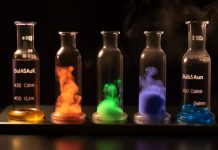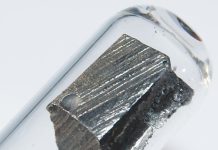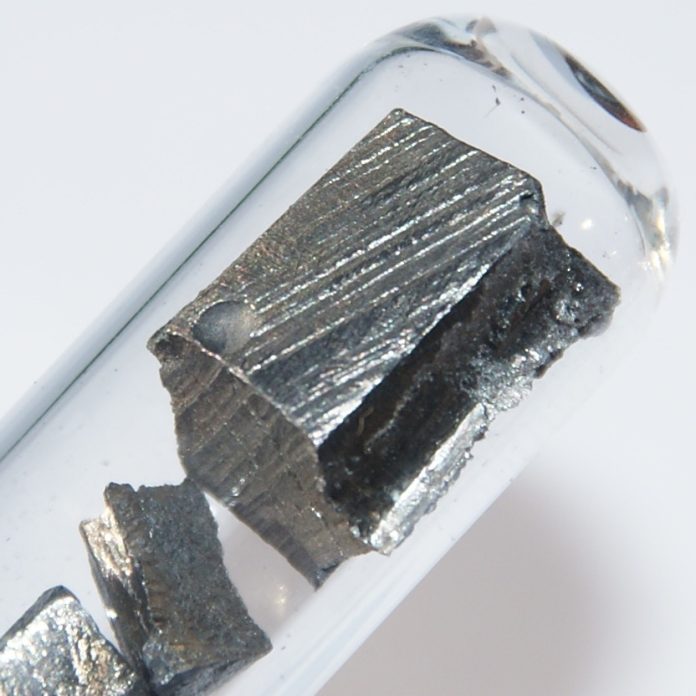From the shadows of scientific confusion to its pivotal role in the technology we use every day, neodymium has proven to be one of the most essential, yet often overlooked elements. This rare earth plays a critical role in shaping modern industry, from powering electric motors to enabling the green energy revolution.
The fascinating story of neodymium unfolds from a misunderstood mineral component to a cornerstone of 21st-century engineering, highlighting its unique properties, industrial applications and geopolitical importance in a rapidly electrifying world. First isolated in 1885, neodymium emerged as a distinct rare earth element after decades of confusion. Its name, meaning “new twin,” hints at its origins—hidden alongside praseodymium within a compound long believed to be a single substance.
Today, neodymium is anything but obscure. It plays a central role in modern technology, especially through its use in NIB magnets—the strongest commercially available magnets that are used in everything from smartphones and wind turbines to electric vehicles and medical devices. Despite its relatively common presence in the Earth’s crust, neodymium’s true significance only emerged in the late 20th century, driving technology in ways few could have predicted.
Much like copper, neodymium is woven into the fabric of our modern life, powering the devices and systems that drive our world forward. But behind its technological prowess lies a tale of scientific discovery that continues to unfold.
The Historical Alchemy of Neodymium
The tale of neodymium begins not with its own discovery, but with the element cerium, unearthed in the early 19th century. In 1841, Swedish chemist Carl Gustaf Mosander isolated from cerium a substance he named “didymium,” which he believed to be a new, singular rare-earth element. The name didymium is derived from the Greek didymos meaning “twin” because of its chemical similarity to lanthanum.
Didymium remained in the scientific lexicon and even appeared in Dmitri Mendeleev’s first periodic table under the symbol Di. Didymium was accepted as an element for more than 40 years, but its inconsistent spectral data across mineral samples puzzled chemists. Some chemists wondered whether didymium consisted of more than one element, and their suspicions were confirmed when notably, Czech chemist Bohuslav Brauner of Prague in 1882 noted irregularities in didymium’s properties and showed that its atomic spectrum was not that of a pure metal. Although he was unable to separate them himself, his observations set the stage for the breakthrough to come.
That breakthrough came in 1885 in Vienna, when Austrian chemist Carl Auer von Welsbach, then a student under Robert Bunsen, took up the challenge. He used atomic spectroscopy to confirm that didymium was composed of two distinct elements. He subsequently succeeded in separating didymium into those two distinct elements through laborious fractional crystallization of nitrate salts. He isolated two new elements: a pink compound he called “neodidymium” (new twin) and a greenish one named “praseodidymium” (green twin), later renamed praseodymium and neodymium. Each separation step took nearly 48 hours and over 100 repetitions, an extraordinary feat of experimental perseverance. Although Welsbach’s meticulous methodology and spectral analysis earned the immediate support of his mentor, Robert Bunsen, many chemists of the time remained skeptical of his findings. It was not until 1925, when H. Kremers successfully isolated neodymium in its pure metallic form, that its identity as a distinct lanthanide element was conclusively confirmed.
Elemental Profile
Neodymium (Nd), with atomic number 60, is a soft, silvery metal belonging to the lanthanide series of rare-earth elements. Despite its name, neodymium is not especially rare and is the 27th most abundant element in Earth’s crust, typically found in minerals like monazite and bastnäsite. Despite its relatively common presence in the Earth’s crust, neodymium poses significant challenges in extraction and purification. Extracting neodymium typically involves ion-exchange and solvent extraction techniques, which are necessary to isolate it from a cocktail of chemically similar rare earth elements. Neodymium exhibits a bright metallic lustre but tarnishes quickly in air due to rapid oxidation and hence it is stored under oil or in sealed containers to prevent oxidation. It is among the more reactive lanthanides, forming oxides and hydroxides upon exposure to air and moisture, and reacting readily with halogens. It has two allotropes, transforming from a double hexagonal to a body-cantered cubic structure at 860°C. Neodymium has a melting point of approximately 1024°C and a boiling point near 3074°C. While it is a relatively poor conductor of electricity and heat compared to other metals, it is ferromagnetic and plays a critical role in modern magnet technology. Although neodymium has no known biological role and is considered moderately toxic, its isotopes are valuable in geology for dating terrestrial and extraterrestrial rocks.
The Evolving Role of Neodymium
Initially, neodymium found limited application and was primarily used as a glass colorant, giving rise to a unique palette of violet, red, and grey shades in lenses and decorative glass. It was also incorporated into didymium glass, which was valued for protective goggles used by welders and glassblowers due to its ability to filter specific light wavelengths. Despite being relatively abundant in the Earth’s crust, neodymium remained chemically elusive and was not isolated in its metallic form until 1925. The element slowly gained industrial relevance through its incorporation in ceramic glazes, UV-filtering glass, and as a catalyst in certain polymerization reactions.
A major leap in neodymium’s global significance occurred nearly a century after its discovery with the invention of neodymium-iron-boron (NdFeB) magnets in 1983. This breakthrough, independently achieved by Dr. Masato Sagawa at Sumitomo Special Metals in Japan and researchers at General Motors in the U.S., came in response to the rising costs and limited supply of samarium-cobalt magnets, then the strongest permanent magnets available.
Dr. Sagawa’s development of the Nd₂Fe₁₄B compound, with boron introduced to enhance coercivity, created a new class of superior, lightweight, and cost-effective permanent magnets that revolutionized many fields. Sumitomo pioneered sintered NdFeB magnets, while General Motors developed a melt-spun form for bonded magnets—both manufacturing techniques are still in use today. These magnets opened up an era of miniaturized high-efficiency electronics, powering everything from mobile phones, earbuds, and computer hard drives to electric vehicle motors, sensors, and wind turbines. NdFeB magnets also became central in MRI machines, drone propulsion systems, and even counterfeit currency detection, showcasing their broad utility.
As demand grew, further innovations followed, including alloying with dysprosium to improve thermal resistance and refining recycling methods to recover rare-earth materials from electronic waste. In addition to its magnetic properties, neodymium is still used in laser technologies, including Nd:YAG lasers for surgery and scientific research, and in specialized optical glasses used in astronomy and calibration tools. From being a misunderstood component of didymium to becoming a cornerstone of clean energy and modern electronics, neodymium’s transformation over the past 140 years represents one of the most remarkable evolutions in the history of materials science.
Strategic Metal with a Green Future
Its strategic value has surged in modern times due to its essential role in high-performance magnets and green technologies. Neodymium plays a pivotal role in the advancement of green energy technologies, largely due to its critical use in the manufacture of NdFeB magnets. These magnets are among the strongest known, capable of retaining magnetic power even at small sizes, which makes them ideal for applications that require high efficiency and low energy consumption.
A major area where neodymium has transformed green technology is in wind power. The high-performance NdFeB magnets are a key component in the direct-drive turbines used in wind farms. These turbines do not require gearboxes, reducing maintenance and increasing efficiency, especially in offshore environments where reliability is critical. The presence of neodymium in these magnets allows for more compact and efficient generator designs, directly contributing to the scalability of wind energy.
Similarly, electric and hybrid vehicles rely heavily on neodymium-based magnets for their electric motors. These motors demand strong magnetic fields in compact spaces to deliver the power and torque necessary for vehicle propulsion. NdFeB magnets enable lightweight, energy-dense motors that help improve fuel efficiency and reduce greenhouse gas emissions. This role is becoming increasingly crucial as global car makers transition away from internal combustion engines.
Today, China dominates the global supply, producing around 87% of the world’s neodymium magnets. This has raised significant geopolitical and economic concerns. While the mining and refinement of neodymium pose environmental challenges, the element’s deployment in renewable technologies presents a significant net benefit in reducing fossil fuel dependency. To balance the ecological cost, initiatives like SUSMAGPRO in the EU aim to recover, reuse, and recycle neodymium magnets from waste electronics and industrial scrap, further enhancing its sustainability profile.
In this way, neodymium serves not only as a powerful enabler of modern technology but also as a cornerstone of the global transition toward low-carbon, renewable energy systems, underscores its continued scientific and industrial importance.
References
- https://www.magnetapplications.com/blog/the-history-of-neodymium-magnets
- https://periodic-table.rsc.org/element/60/neodymium#history
- https://www.chemicool.com/elements/neodymium.html
- https://www.sciencelearn.org.nz/resources/2800-neodymium
- https://www.azom.com/article.aspx?ArticleID=1595
- https://periodic-table.rsc.org/element/60/neodymium
- https://www.livescience.com/37656-neodymium.html
- https://chemistrydictionary.org/neodymium/
- https://pubchem.ncbi.nlm.nih.gov/element/Neodymium
































